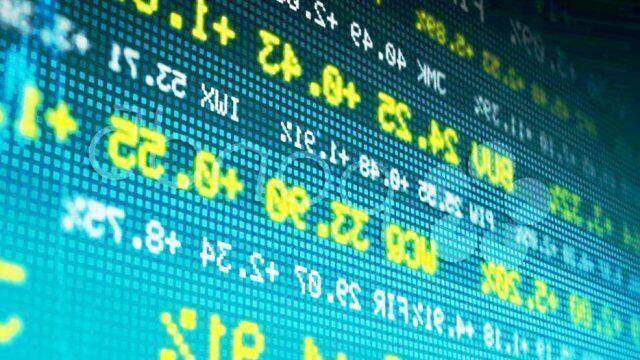
The offers that appear on this site are from companies that compensate us. But this compensation does not influence the information we publish, or the reviews that you see on this site. We do not include the universe of companies or financial offers that may be available to you.
- The irregular temporal behavior and a nonlinear relationship between inputs and outputs make the data to be nonlinear and it can be detected using Brock-Dechert-Scheinkman (BDS) test [24].
- For example, some prefer to shorten their sampling period to get a head start on the crowd (at the risk of getting a premature, false signal).
- This scan looks for stocks with a rising 150-day simple moving average and a bullish cross of the 5-day EMA and 35-day EMA.
- Despite this, investors use moving averages to help smooth price action and filter out the noise.
- If a price movement breaks above the SMA, it could signal an opportunity to buy.
Remember that we recalculate the moving average after every transaction. Other choices for the order of the MA will usually result in trend-cycle estimates being contaminated by the seasonality in the data. The effects of the particular filter used should be understood in order to make an appropriate choice. On this point, the French version of this article discusses the spectral effects of 3 kinds of means (cumulative, exponential, Gaussian). A major drawback of the SMA is that it lets through a significant amount of the signal shorter than the window length.
Emerging Business Intelligence Framework for a Clinical Laboratory Through Big Data Analytics
Note, however, that the prediction of abnormal, extremely high or low demands is not considered in this study. In real situation, forecasting may be more complicated due to unexpected variables such as special events or unusual weather. Thus, the authors recommend for food service managers to employ techniques such as MA with the judgments from their own experience to get better forecasting results under their unique environment.
Morningstar Wide Moat ETF Experiences Big Inflow – Nasdaq
Morningstar Wide Moat ETF Experiences Big Inflow.
Posted: Fri, 16 Jun 2023 15:04:00 GMT [source]
Autoregression is a special case of a multiple regression model where the target is predicted using a linear combination of weights and features. Similarly, the target value is predicted using a weighted combination of older values in an autoregression model. So, autoregression means that the regression occurs using the values of the variable itself. The parameter p denotes how far back into the past the model needs to look to predict the next value. For example, some traders would like to consider recent events and minor fluctuations, while long-term investors would like to look at the same data but over a larger trend.
h International Symposium on Process Systems Engineering (PSE
MAE is calculated by taking the average of the “Absolute Error” column, and is most appropriate when the cost of prediction errors is proportional to the absolute size of the prediction errors. Below we graph the original data with the exponential moving average. John Murphy’s Technical Analysis of the Financial Markets contains a chapter devoted to moving averages, their various uses and their pros and cons. In addition, Murphy shows how moving averages work with Bollinger Bands and channel-based trading systems. Moving average overlays can also be added to other technical indicators like RSI, CCI, and Volume. Click the “Advanced Options” triangle next to the indicator, and select a moving average from the Overlay dropdown menu.
The moving average (MA) is a simple technical analysis tool that smooths out price data by creating a constantly updated average price. The average is taken over a specific period of time, like 10 days, 20 minutes, 30 weeks, or any time period the trader chooses. There are advantages to using a moving average in your trading, as well as options on what type of moving average to use. In technical analysis, the moving average method is a simple but useful instrument. A stock’s support and resistance levels and trend direction can both be predicted using moving averages. Trend-following or trailing is because it uses previous prices as its basis.
Adjusting the Settings
A moving average is a technical indicator that market analysts and investors may use to determine the direction of a trend. It sums up the data points of a financial security over a specific https://traderoom.info/understanding-the-difference-between-data/ time period and divides the total by the number of data points to arrive at an average. It is called a “moving” average because it is continually recalculated based on the latest price data.
What is the 3 point moving average method?
- Add up the first 3 numbers in the list and divide your answer by 3.
- Add up the next 3 numbers in the list and divide your answer by 3.
- Keep repeating step 2 until you reach the last 3 numbers.
The example below shows a 5-day moving average evolving over three days. A moving average is an average of data points (usually price) for a specific time period. That’s because each data point is calculated using data from the previous X periods. Because it averages prior data, moving averages smooth the price data to form a trend-following indicator. In this article, we looked at how the moving averages method can be used to perform time series forecasting and the moving average smoothing approach of extracting the underlying trends in noisy data.
Calculating moving average in Excel
We can compute the cumulative moving average in Python using the pandas.Series.expanding method. This method gives us the cumulative value of our aggregation function (in this case the mean). As before, we can specify the minimum number of observations that are needed to return a value with the parameter min_periods (the default value being 1). On the contrary, the window size becomes larger as the time passes when computing the cumulative moving average. There exist different types of moving average such as simple (also known as arithmetic), exponential, variable, triangular, and weighted.
If you have already created a chart for your data, adding a moving average trendline for that chart is a matter of seconds. For this, we are going to use Excel Trendline feature and the detailed steps follow below. Supposing you have a list of data, e.g. sale figures or stock quotes, and you want to know the average of the last 3 months at any point of time. For this, you need a formula that will recalculate the average as soon as you enter a value for the next month.
ARIMA models are essentially regression models, where the regressors are past values of the series (AR) and the past errors (MA) at various lags. In this work, we consider seasonal ARIMA models that are implemented using the “forecast” package for R (Hyndman and Khandakar, 2008). Like done for ES, an algorithm performs a search over several ARIMA models, and the most appropriate one is selected using information criteria. As regression models, ARIMA can be expanded to include external/exogenous variables (ARIMAX/SARIMAX). Although smoothing methods can generate accurate forecasts and detect anomalies, they cannot easily incorporate covariates. Currently, smoothing methods are used commonly for univariate prediction or to smooth effects, such as day-of-week (DOW) cycles and time trends, in advance of applying other methods.

What is the 4 moving average method?
This is calculated by adding the latest four quarters of sales (e.g. Q1 + Q2 + Q3 + Q4) and then dividing by four. This technique smoothes out the quarterly variations and gives a good indication of the overall trend in quarterly sales.
